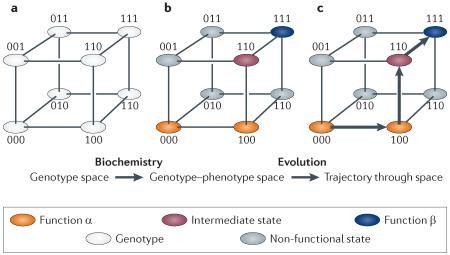Comparative biochemistry, the study of evolutionary relationships between organisms at the molecular level, provides powerful evidence for evolution. By comparing the biochemical makeup of different species – particularly proteins and nucleic acids – scientists can trace evolutionary lineages and understand how life diversified over millions of years. This article explores how this field illuminates the evolutionary process.
Biochemical Similarities: A Reflection of Common Ancestry
One of the most compelling arguments for evolution from comparative biochemistry lies in the striking similarities observed in the fundamental biochemical molecules across all living organisms. For instance, all life relies on DNA or RNA for genetic information storage and utilizes the same basic set of 20 amino acids to build proteins. The universality of these molecules suggests a common ancestor from which all life descended.
Furthermore, the genetic code, the set of rules by which DNA or RNA sequences are translated into proteins, is nearly identical across all life forms. Minor variations exist, but the overwhelming similarity reinforces the common ancestry hypothesis. This shared genetic language allows scientists to compare gene sequences between species, revealing evolutionary relationships.
Figure 1: A simplified representation of genotype-phenotype space, demonstrating how biochemical characteristics map onto genetic sequences. This space is crucial for understanding how proteins evolve new functions.
Protein Structure and Function: Evolutionary Insights
Comparative studies of protein structure and function offer further evidence. Homologous proteins, those sharing a common ancestor, often exhibit similar structures and functions even in distantly related organisms. For example, the protein cytochrome c, crucial for cellular respiration, has a highly conserved structure across a wide range of species, from bacteria to humans. Differences in the amino acid sequence of cytochrome c between species correlate with evolutionary divergence times, providing a molecular clock for estimating when lineages split.
Figure 2: Examples of parallel evolution highlight how biophysical constraints shape protein function. The same mutations often arise independently in different lineages facing similar environmental pressures.
Metabolic Pathways: Conserved Across Life
Metabolic pathways, the series of biochemical reactions that sustain life, also reveal evolutionary connections. Core metabolic processes, such as glycolysis and the citric acid cycle, are remarkably similar across diverse organisms. This conservation suggests that these pathways evolved early in life’s history and have been maintained through natural selection due to their fundamental importance. Variations and adaptations within these core pathways further demonstrate how evolution tinkers with existing structures to meet the specific needs of different organisms.
Ancestral Sequence Reconstruction: Unveiling Evolutionary History
Ancestral sequence reconstruction, a powerful technique in comparative biochemistry, allows scientists to infer the sequences of ancestral proteins and study their properties. By comparing these resurrected proteins with their modern counterparts, researchers can gain insights into how protein function has evolved over time. This approach provides a direct window into the past, allowing for a deeper understanding of the evolutionary trajectories of biological molecules.
Conclusion: A Powerful Tool for Understanding Life’s History
Comparative biochemistry provides compelling evidence for evolution by demonstrating the shared biochemical ancestry of all life forms. Similarities in fundamental molecules, protein structure and function, metabolic pathways, and the ability to reconstruct ancestral sequences all point towards a common origin and diversification through evolutionary processes. As techniques in this field continue to advance, our understanding of the history and interconnectedness of life will only deepen. Comparative biochemistry stands as a testament to the power of molecular analysis in illuminating the grand narrative of evolution. It offers a powerful lens through which we can understand the history of life on Earth and appreciate the profound interconnectedness of all living things.
